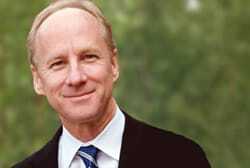The New York Times recently published an interesting article on the popularity of Washington, D.C., as an “ideal place to grow older,” citing such senior-friendly assets as easy walkability and a prevalence of community gardens doing double duty as sources of fresh food and places to socialize. While the piece focused on how the city is striving to accommodate the lifestyles of aging-yet-active residents, several of the amenities it describes are part of a greater trend in urban development—striving to ensure that city living means healthy living for members of all generations.
ULI has been tracking this movement for the past three years through its Building Healthy Places Initiative, which seeks to leverage the power of the Institute’s global networks to shape projects and places in ways that improve the health of people and communities. Generous support from the ULI Foundation, the Colorado Health Foundation, and the Robert Wood Johnson Foundation has made possible an impressive series of activities—consumer surveys, advisory panels, forums, workshops, conferences, and district and national council programs—each of which has informed the Institute’s work, such as the Building Healthy Places Toolkit, a handy how-to reference guide published in 2015; and our Active Transportation and Real Estate: The Next Frontier publication, released this past spring, which looks at the expansion of pedestrian- and bicycle-friendly trail-oriented development.
We have accomplished much in terms of defining the role that land use plays in creating healthy places; and based on what we’ve learned, we’re entering a new phase of the initiative that promises to be just as productive. In October, just in time for the 2016 ULI Fall Meeting in Dallas, we’ll be releasing new reports based on work centered on two specific areas: the transformation of underperforming urban and suburban arterials (usually cluttered with unsightly strip centers) into vibrant, healthy corridors; and access to healthy food as a real estate amenity.
Through the Healthy Corridors Project, we worked with ULI Idaho, ULI Colorado, ULI Los Angeles, and ULI Nashville to identify demonstration arterials in Boise, Denver, Los Angeles, and Nashville, outlining a typology for the components of a healthy corridor and creating a roadmap to measure progress. Lessons learned from the two-year engagement form the basis for the report, with the key takeaway being this: corridor redevelopment is about more than just what’s next to the road itself. It’s about connecting with the adjacent neighborhoods, and understanding the needs of all of those who live, work, and travel along the corridor.
Two food and real estate forums, held in New Orleans and Tarrytown, New York, this past spring explored the challenges, trends, and opportunities around food as a value-add for real estate. During both forums, ULI members shared insights (as well as extraordinary food) and heard from land use and food industry experts on how investments in community gardens and communal spaces such as “food halls” contribute to successful developments. The new report will share key takeaways on how a focus on food can translate into enhancements in health, sustainability, social equity, food system security, and real estate returns.
Clearly, building for health and wellness is a global movement that is here to stay. It is a sign of changing times—in terms of how cities around the world are introducing amenities and services to encourage physical activity, healthy living choices, and social interaction to improve livability and gain a competitive advantage. Examples of the global reach of this movement can be found in the cities of Singapore and Manila, where programs held this past summer engaged ULI in highlighting the importance of healthy communities. During the World Cities Summit in Singapore, which the Institute hosts each year with the Centre for Liveable Cities, we discussed how to build on Singapore’s progress in becoming a “car-lite” city that emphasizes biking and walking over driving. In Manila, ULI Philippines held a Building Healthy Places Awards competition to honor innovative developments that promote healthy living in the Philippines. The competition—a first for this national council—was based specifically on how projects incorporated the recommendations from our Building Healthy Places Toolkit.
The Institute’s work in this area holds great promise. We recently hired a senior visiting fellow, Juanita Hardy, who will be working to broaden ULI’s focus on creative placemaking as part of building for health, including a new district council grant program that recognizes creative placemaking along urban and suburban corridors. We are also exploring the creation of a health leaders network and more extensive engagement with our product councils on creating healthy communities. And we will continue to work with organizations such as the American Planning Association, the American Institute of Architects, and the U.S. Green Building Council to take this work to the next level.
As we move ahead with the Building Healthy Places Initiative, we want and need your input. The Fall Meeting will feature several sessions on real estate and health, as well as tours of some creative developments that demonstrate the Dallas/Fort Worth area’s focus on design that is health-conscious and sustainable. Please join us at the meeting, network, and share your expertise; the Building Healthy Places Initiative is one of many ways that you can shape ULI’s program of work and the overall direction of the Institute. Each of our efforts to create better communities begins with one good idea, and the knowledge you share at the Fall Meeting could lead to new partnerships and new opportunities to expand our thought leadership. I look forward to seeing you in Dallas!






